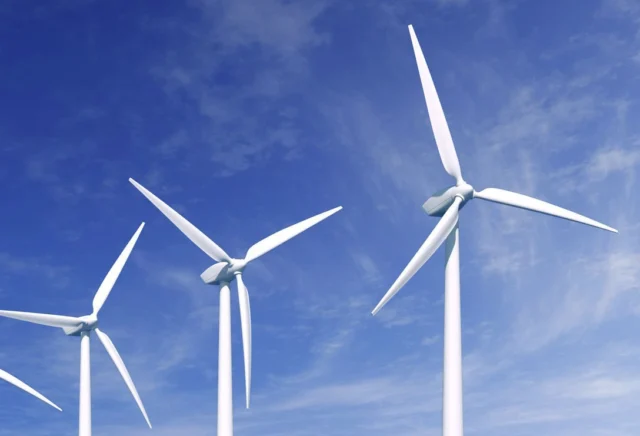1. Introduction
The increasing integration of renewable energy sources (RES) such as wind and solar into power systems requires these sources to contribute to grid stability during disturbances. One critical requirement is Fault-Ride Through (FRT), which ensures that generators remain connected during voltage disturbances caused by grid faults. This article outlines the concept, relevance, and standard compliance requirements of FRT in renewable energy systems.
2. Definition
Fault-Ride Through (FRT) refers to the capability of a generator or inverter-based resource to remain connected to the grid during short-duration voltage dips or swells caused by grid faults.
Rather than disconnecting during faults, FRT-capable systems support grid recovery by staying online and injecting or absorbing reactive power when needed.
2.1 Low Voltage Ride Through (LVRT)
LVRT is the ability of a grid-connected power generator-typically inverter-based systems like wind turbines or photovoltaic (PV) inverters-to remain connected and operational during short-term voltage sags (i.e., drops in grid voltage below nominal levels), usually caused by transmission or distribution faults.
Instead of disconnecting, LVRT-capable systems are expected to:
-
- Remain online during the disturbance.
- Support voltage recovery by injecting reactive power (as per grid code).
- Recover normal operation once the voltage stabilizes.
LVRT is essential to prevent large-scale disconnection of DERs during faults, which could destabilize the grid.
2.2 High Voltage Ride Through (HVRT)
HVRT refers to the ability of a grid-connected power generator to
withstand and remain connected during temporary overvoltage conditions
on the grid. These overvoltages can result from events such as sudden load rejection, line switching, or fault clearance with capacitive overvoltages.
HVRT-compliant systems are expected to:
- Stay connected during these temporary overvoltage events.
- Not shut down or trip due to protection unless voltage exceeds defined limits for defined durations.
- Avoid cascading trips in high RES-penetration networks.
HVRT requirements are typically defined in voltage-time curves in grid codes and complement LVRT for comprehensive fault ride-through capability.
3. Relevance to Renewable Energy Systems
3.1 Grid Stability
RES must contribute to voltage and frequency stability. Without FRT, widespread disconnection of RES during faults can lead to cascading failures and large-scale blackouts.
3.2 Inverter-Based Resources
Most RES are connected through power electronics inverters. These can be controlled to support grid voltage by injecting reactive power during faults and limiting fault currents.
3.3 Protection Coordination
FRT supports the selectivity and coordination of protection systems by preventing unnecessary tripping of DERs during transient events.
3.4 Compliance and Operational Integrity
Grid codes mandate FRT capability to ensure the resilience and integrity of interconnected power systems, especially under high RES penetration.
4. International Standards and Grid Codes
4.1 IEC Standards
- IEC 61400-21: Power performance measurements of wind turbines, including FRT behavior.
- IEC 62116: Anti-islanding and FRT testing procedures for PV inverters.
- IEC 62786: Technical requirements for connection of DERs, including FRT.
4.2 IEEE Standards
- IEEE 1547-2018: Interconnection of DERs, including voltage/frequency ride-through.
- IEEE 2800-2022: Specifies performance requirements for large inverter-based resources connected to the bulk power system.
4.3 National Grid Codes
Examples of FRT mandates:
- Germany (BDEW): Wind/PV systems must remain connected during faults and support voltage recovery.
- UK (G99): Specifies voltage-time profiles and reactive power requirements.
- UAE (DEWA, TRANSCO, NGTS): FRT requirements derived from IEC and adapted to regional grid stability needs.
5. Voltage-Time Profile Example
A generalized voltage-time characteristic for FRT requirements:
| Voltage (% of Nominal) | Minimum Time to Remain Connected |
|---|---|
| 15% | 0.15 seconds |
| 50% | 0.3 seconds |
| 90% | 1.0 second |
| 100% | Continuous |
- Reactive power injection during voltage dips.
- Restoration of active power output within 1–2 seconds post-fault.
6. Engineering Implementation
6.1 Control Strategy
Inverter controls are programmed to:
- Detect grid disturbances.
- Limit fault current.
- Inject reactive power based on voltage deviation.
- Resume power delivery post-fault.
6.2 Testing and Certification
FRT performance is validated through:
- Laboratory testing.
- Power Hardware-in-the-Loop (PHIL) simulations.
- Grid compliance testing during commissioning.
7. Conclusion
Fault-Ride Through is a critical feature for renewable energy systems, ensuring operational continuity during faults and compliance with modern grid codes. Implementing FRT enhances system stability, prevents unnecessary DER disconnections, and supports post-fault voltage recovery.
8. Abbreviations and Definitions
| Acronym | Definition |
|---|---|
| FRT | Fault-Ride Through |
| LVRT | Low Voltage Ride Through |
| HVRT | High Voltage Ride Through |
| DER | Distributed Energy Resource |
| RES | Renewable Energy Sources |
| IEC | International Electrotechnical Commission |
| IEEE | Institute of Electrical and Electronics Engineers |
| PHIL | Power Hardware-in-the-Loop |
| G99 | UK Grid Code for generation connection |
| BDEW | German Association of Energy and Water Industries |
